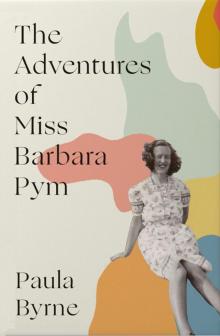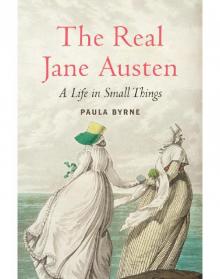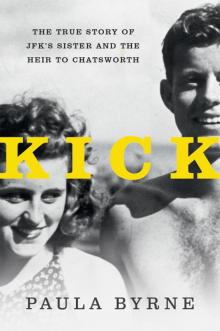- Home
- Paula Byrne
Belle Page 2
Belle Read online
Page 2
Reports of his exploits were soon reaching the Admiralty. In February 1759 the Trent joined the Vestal in giving chase to an enemy ship at the western end of the English Channel. This was a French frigate, La Bellone, en route to Martinique. They engaged in a four-hour battle at close quarters. La Bellone was duly captured, taken into service and renamed the Repulse.2 After various further exploits, the Trent was taken back into dock. A report was filed in the Admiralty: ‘The Portsmouth Officers inform us the Trent is touched with the worm but she does not make water and can be repaired and used for about 9 or 10 months on Channel Service. Have approved the Officers’ proposal but if she is to go on foreign service she will have to be resheathed.’ The need for comprehensive repairs was the reason the Trent did not sail for the West Indies until the late summer of 1760.3
The refit was clearly an outstanding success. The Trent proved herself as fast and effective as any frigate in the fleet. Captain Lindsay’s daily log reveals a succession of chases and prizes. On 1 November, a sloop en route from St Eustatia to Martinique; a few days later a Dutch schooner; and on Thursday, 20 November, a sail to the south which proved to be ‘a Spanish sloop from Teneriff to St Domingo with Settlers’.
Just before Christmas, the Trent joined the Boreas in attacking a sloop that was at anchor under the mangroves in Cumberland Harbour, St Iago Island. She was a French privateer, the Vanquier. Lindsay and the captain of the Boreas sent in a small boat with marines who boarded her after sharp resistance. The French captives were sent on shore a week later at Grand Cayman, where they were exchanged for English prisoners.
All through the following year, Lindsay continued his patrols, sailing hundreds of miles around the Caribbean basin. One day he gave chase to a Spanish man-of-war bound from St Domingo to Havana, the next he attacked Le Bien Aimé, a French merchant frigate from Martinique with twenty-two guns, eighty-four men, and a heavy load of sugar and coffee. He took her with only one man killed and five wounded, to the enemy’s twenty killed or wounded.4 The French prisoners were transferred to HMS Cambridge.
There were occasional weeks of respite, when the Trent would be moored off Port Royal, Jamaica, for cleaning, caulking, rerigging, the removal of ballast, the supply of fresh water and provisions. Time spent at anchor was troublesome from the point of view of discipline. On one occasion at Port Royal a midshipman was punished for embezzlement, receiving nine lashes alongside every ship in the harbour, with a halter around his neck. Another time, Lindsay had to punish some men for insubordination, making them run the gauntlet through the ship. Then they would be off again: in April 1761 they took a Spanish sloop from Port au Prince laden with sugar; in August a Dutch schooner; in September La Donna de la Providence, bound for France – her crew were dispatched to a plantation, where they would be held until the opportunity arose for an exchange of prisoners.
Captain Lindsay’s exploits were celebrated in the press back home in England. In January 1762 the London Chronicle printed a front-page report from Kingston in Jamaica, dated 31 October 1761 (news travelled slowly in the days before the invention of the telegraph). It announced that:
Thursday arrived from a cruise, his Majesty’s ship Trent, John Lindsay, Esq; Commander, and brought in two prizes, said to be a Dutch schooner and sloop, both from Cape Francois, which he took in the Bite of Leogan, and were part of a fleet of about fifteen sail, who had been assisting our enemies at the Cape; they are both richly laden with indigo, etc. etc. It is reported, the poltroon commanders of these vessels, had the impudence to give out they would take the Trent; though when within sight of their enemy, they thought proper to fly away with all speed, and leave their friends a sacrifice for their presumption.5
Clearly, Captain Lindsay was a man of courage and single-mindedness, if not reckless impulsiveness. The prizes were mounting up: every captured ship meant a bounty for the crew, and especially for the captain.
His greatest triumph came at the siege of the castle of Morro, which stood guard over Havana Bay on the key strategic island of Cuba, held by the Spanish. Captain Goostrey of the Cambridge was shot dead in action on 1 July 1762, and Lindsay was sent to fill his place, where he ‘gave many strong proofs of his valour’.6 A painting by the naval artist Richard Paton, now in the National Maritime Museum at Greenwich, shows the bombardment of the castle. It gives a vivid sense of the smoke of battle, the ease with which a wooden warship might burst into flames, and the nerves of steel demanded of the captains. The Cambridge is shown flying a red ensign in the mizzen shrouds, as a signal that her captain is dead. In the foreground is a little rowing boat in which Lindsay is being taken from the Trent to the Cambridge, where he will assume command.
At the end of July a breach was made with mines in the wall of the castle, and this enabled the British to take it by storm. The fall of Havana was now inevitable: it occurred on 11 August. In addition to stores and booty up to the value of £3 million, nine Spanish ships of the line were captured, and two on the stocks were burned. Possession would, however, be short-lived: under the terms of the Treaty of Paris, which ended the war the following year, Havana was returned to the Spanish.
After the taking of Havana, the Trent participated in the mopping-up operation. The sick and wounded were transported for treatment, newly arriving Spanish ships – including some slave transporters – were headed off. Then in July 1763 came the order to return home. The Trent reached Spithead on 12 August, and ten days later she was moored at Long Reach. Lindsay set about stripping the ship and getting his officers ashore. After a final cleaning, he paid off the men and closed his log on Friday, 9 September. The war was over; the Trent had performed her service. She was decommissioned and scrapped, and Captain Lindsay was knighted for his gallantry.
Despite the ending of the war, the colonies still needed to be patrolled, so before long Lindsay was back in the West Indies, in command of another ship. One senses that he couldn’t keep away. The heat and the excitement were a far cry from life in the chilly and dull Scottish Highlands. In 1768 he married a Scottish girl called Mary Milner, daughter of an MP. They had no children, although there is evidence that Lindsay sired one or possibly two illegitimate children in Scotland. His portrait was painted at around the time of his marriage by the leading Scottish society artist Allan Ramsay. He is seen in naval dress uniform, and looks not only handsome and distinguished, but somehow kind. He was soon off abroad again, this time to the East Indies.
One entry stands out in Captain Lindsay’s log of his earlier mission to the West Indies. Amidst the chases, the boardings and the prizes, the time at anchor and the set-piece drama of the siege, there is a poignant moment of rescue. It is Saturday, 7 February 1761, and the Trent is off Curaçao, one of the southernmost Caribbean islands: ‘saw a small boat to the East. Came up with her, found in her 2 English Negroes that Run away from Martinique. One of them dy’d immediately being Starv’d.’ The surviving negro, who went by the name of Peter King, was taken aboard and well looked after. Lindsay was clearly a man of compassion as well as purpose.
At some point in his West Indian naval adventures Lindsay met a slave woman, who was almost certainly called Maria. She would be Dido’s mother. The story told in England many years later, of which we have only a second-hand account, was that he captured a Spanish ship and took a fancy to one of the female slaves on board. We have seen from the logbook that the Trent did run down several Spanish ships. Perhaps the woman was a slave in service to a Spaniard on board that sloop heading to St Domingo with settlers, or the one coming from Port au Prince laden with sugar for Europe. We cannot, however, be certain that she was in fact on a Spanish ship, and not on one of the Dutch or French ones that Lindsay also captured. The muster rolls of the Trent include the names of many prisoners, who were held on board and victualled at two-thirds the allowance of the crew, before being transferred to other ships or put ashore. Among them were ‘Thomas a negro’, ‘James a negro’, ‘Marique’, ‘Domingeta’, ‘Sansauvie’, ‘Lanset’, ‘Gre
to’, ‘Adam’, and many more unnamed negroes. Tantalisingly, none of them is readily identifiable as the ‘Maria’ whom Lindsay kept as his mistress, although the prisoners from a Spanish sloop taken on 22 April 1761 did include one ‘Quainda Mairia’.
Then again, stories of this kind are often garbled in the detail, or embellished for dramatic effect in the retelling. It is not beyond the bounds of possibility that the woman was actually a prize taken on dry land. Could it have been in the aftermath of the capture of Havana? In February 1763 the Trent discharged many prisoners who had been captured in Havana onto a place called Belle Island. Perhaps Maria was retained from the group and Dido conceived at this time, the association inspiring the name Belle.
But this is speculation. All we know for sure is that the encounter between Captain Lindsay and Maria was the beginning of Dido’s story. There is evidence that Dido was about five years old late in the year 1766. This would suggest a date of birth before the siege of the castle of Morro and the surrender of Havana, and strongly suggests that Dido was conceived in the captain’s cabin aboard the Trent.
Maria appears to have remained on board the Trent until the summer of 1763, when the vessel returned to England and was decommissioned.7 Lord Mansfield was later reported as saying that the negro woman was with child when the ship returned home, and that Dido was born in England, but a later Murray–Mansfield family tradition has it that she was born at sea. Unlikely as it may now seem, it was not uncommon for wives, mistresses and even babies to be present on Royal Navy warships in the eighteenth century.
Captain Lindsay would have possessed a well-thumbed copy of the Regulations and Instructions relating to His Majesty’s Service at Sea. Article XXXVIII of the rules for the captain or commander clearly stated that ‘He is not to carry Women to Sea, nor to entertain any Foreigners to serve in the Ship, who are Officers or Gentlemen, without Orders from the Admiralty.’8 The official navy line was that wives could come on board when a ship was in port, but not go to sea. Prior to the Battle of Trafalgar, when the ship of the line HMS Prince was in dock in Portsmouth, one eyewitness reported that 450 women came on board, but that only fifty were actually wives of sailors serving on the ship. In other words, wives, girlfriends and an abundance of prostitutes would pile on board when a ship was at anchor, and there would be an orgy of drunkenness and debauchery. Once the crew’s needs had been satisfied in this way, the women were all supposed to be removed.
But the reality was that the rule against seagoing women was very often relaxed, especially for the wives of captains and officers.9 Estimates vary as to the numbers of women actually at sea with the fleet, but there is ample anecdotal evidence of their presence aboard in the late eighteenth and early nineteenth centuries. One has only to consider the novels of one of English literature’s most navally connected novelists, Jane Austen.
Her brother, Captain Charles Austen, took his wife Fanny and their three children to live aboard his ship, the Namur. Fanny Austen’s surviving letters describe her making clothes for her little girls, reading in the ship’s library, and attending the ship’s theatre. Whenever she spent time ashore she was anxious to get back to her ‘home’ on board, ‘however uncomfortable that home may be’.10 One of her daughters suffered from sea sickness, and Fanny discussed the possibility of leaving her to be raised by her aunt Jane, but in the end decided that the family should stay together on board ship.
In Jane Austen’s novel Persuasion there is a long discussion about the suitability of women living aboard ship. Captain Wentworth’s old-fashioned belief that a ship is no place for a woman is given short shrift by his sister, Mrs Croft, who is married to an admiral and has lived aboard five vessels, including a battleship. ‘Women may be as comfortable on board, as in the best house in England,’ she says. ‘I believe I have lived as much on board as most women, and I know nothing superior to the accommodation of a man of war.’ She has crossed the Atlantic four times, and says that ‘the happiest part of my life has been spent on board a ship’.11
Despite Mrs Croft’s protestations, life on board a man-of-war was hard for the wife of a sailor, even a captain. She had to share her husband’s hammock or bunk, and his daily ration of salted beef, dried peas, hardtack and cheese. She also had to try to stay out of the way of the ship’s daily activities. Outside the captain’s cabin, privacy was in short supply on a ship that might carry four hundred sailors and marines.
Childbirth at sea was not unknown, and sometimes a ship’s guns would be fired to hasten a difficult birth – a practice that gave rise to the saying ‘a son of a gun’. During the Napoleonic Wars, Captain Glascock of the Royal Navy wrote: ‘This day the surgeon informed me that a woman on board had been labouring in childbirth for twelve hours, and if I could see my way to permit the firing of a broadside to leeward, nature would be assisted by the shock. I complied with the request, and she was delivered of a fine male child.’12 Fanny Austen gave birth to her fourth child on board the Namur, but tragically she died two weeks later, as did the baby. The Austen family lamented that she had not been removed to land sooner.
There are even records of women assisting aboard a ship in battle, attending the wounded or carrying gunpowder.13 Maria the liberated slave may have tended to the wounded during the siege of Morro castle as well as tending to the sexual and domestic needs of Captain Lindsay. At the end of the war he appears to have avoided getting into any trouble for bringing her back to England. And when he returned to sea, he left behind an extraordinary arrangement for the care of his ‘mulatto’ daughter.
3
The Slave
‘The Abolition of the Slave Trade’: caricature by Isaac Cruikshank of a slave woman being lashed aboard ship
The handsome Royal Navy captain with aristocratic blood in his veins takes his prize, an African slave. Like thousands of other slaves, the terrified woman had been branded with the initials of her former owner. Now, though, she belongs to Captain Lindsay. She knows what to expect: rape and further servitude. Never could she have dreamed that the encounter would bring into the world a daughter who would influence the course of history. Like those of thousands of other women who were taken from Africa and sold into slavery Maria’s inner life is unknown to us. We cannot know her, but it is possible to reconstruct the kind of life she lived before being taken aboard the Trent.
The enforced removal of Africans as a labour force to work the West Indian sugar plantations was conducted via the slave ship. It has been estimated that through the long history of the slave trade some twelve million Africans were loaded and transported onto Atlantic slave vessels.1 Sometimes known as a ‘Guineaman’, the slave ship is the enduring symbol of the horrors of the transatlantic trade, a floating dungeon whose stench could be smelt from miles away, its wake trailed by dead-eyed sharks awaiting their prey. Cabin boy Samuel Robinson, aboard a slaver in 1800, was terrified by the sight of these predators, and the knowledge of what would happen to anyone unfortunate enough to go overboard: ‘The very sight of him slowly moving around the ship, with his black fin two feet above the water, his broad snout and small eyes, and the altogether villainous look of the fellow, make one shiver, even when at a safe distance.’2
Before they set eyes on the ocean the Africans had been captured, marched in ‘coffles’, chained together, and sold at market. Many were bought and sold several times along the way to the coast. The process was brutal and degrading. Families were torn apart, and the captives prodded and poked like animals, assessed for their value and given a price. ‘Vendue’ (sale) masters knew what they were looking for: good teeth, clear eyes, strong limbs, full height and no obvious signs of disease. Women who were ‘long-breasted’ were passed over, since this was taken to be an indication of age.3 Bellies were checked for evidence of pregnancy.
Slave ‘surgeons’ were brought in for preboarding triage, with painful and humiliating examinations being undertaken. Breasts and genitalia were scrutinised. Thomas Aubrey, an early-eighteenth-century slave s
urgeon, noted in his log that ‘Sometimes the Men have Gonorrhoeas, or Ulcers in the Rectum, or Fistulas, and the Women Ulcers in the Neck of the Matrix.’4 Slaves were checked for signs of smallpox, a disease that could wipe out most of the ‘cargo’.5
Thanks to the testimony of ex-slave Mary Prince we have an eyewitness account, from a female perspective, of the desperate, shameful process of being sold at a vendue market.6 ‘I have been a slave,’ she wrote. ‘I have felt what a slave feels, and I know what a slave knows.’7 She was born in 1788, to an enslaved family in Bermuda. When she was a young girl she and each of her sisters was dressed in an osnaburg, a rough linen shroud-like garment, to be taken to the marketplace.
At length the vendue master, who was to offer us for sale like sheep or cattle, arrived, and asked my mother which was the eldest. She said nothing, but pointed to me. He took me by the hand, and led me out into the middle of the street, and, turning me slowly round, exposed me to the view of those who attended the vendue. I was soon surrounded by strange men, who examined and handled me in the same manner that a butcher would a calf or a lamb he was about to purchase … The bidding started at a few pounds, and gradually rose to 57 … The people who stood by said that I had fetched a great sum for so young a slave. I then saw my sisters led forth, and sold to different owners. When the sale was over, my mother hugged and kissed us, and mourned over us, begging us to keep a good heart. It was a sad parting; one went one way, one another, and our poor mammy went home with nothing.8

 Mirror, Mirror
Mirror, Mirror Belle
Belle The Adventures of Miss Barbara Pym
The Adventures of Miss Barbara Pym The Real Jane Austen
The Real Jane Austen Look to Your Wife
Look to Your Wife Kick
Kick Perdita
Perdita Mad World: Evelyn Waugh and the Secrets of Brideshead (TEXT ONLY)
Mad World: Evelyn Waugh and the Secrets of Brideshead (TEXT ONLY)